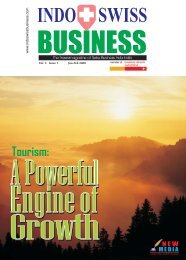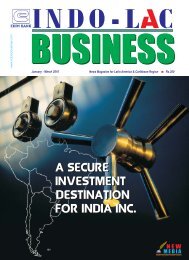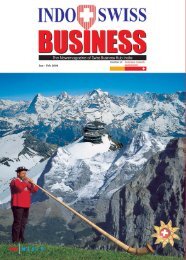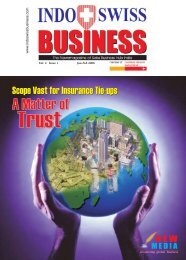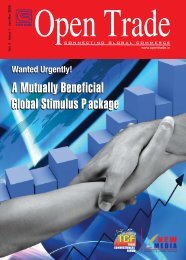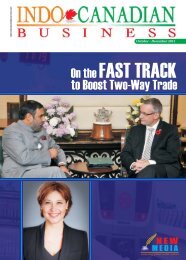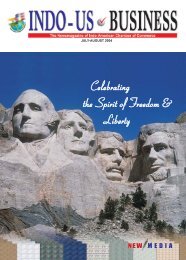pele SciaSction - new media
pele SciaSction - new media
pele SciaSction - new media
You also want an ePaper? Increase the reach of your titles
YUMPU automatically turns print PDFs into web optimized ePapers that Google loves.
KOREA<br />
Soft & Sensitive<br />
in Style &<br />
Substance<br />
The traditional culture of Korea is rich and varied. Apart from<br />
the instruments used, traditional Korean music is characterized<br />
by improvisation and the lack of breaks between movements.<br />
A pansori performance can last for over eight hours during<br />
which a single singer performs continuously.<br />
Rather than contrasting different speeds as it is common in<br />
Western music, most traditional Korean music begins with the<br />
slowest movement and then accelerates as the performance<br />
continues.<br />
Korean court music, called jeongak, is closely related to the<br />
literate upper-class, and has a strong intellectual emphasis.<br />
Jeongak is played at a very slow pace, with single beats taking<br />
as long as three seconds. The beat matches the speed of<br />
breathing rather than the heartbeat as in most Western music,<br />
and feels static and meditative.<br />
Pungmul is Korea's folk music and is full of expressions and<br />
emotions. This kind of traditional music is closely related to the<br />
lives of common people. As with the Jeongak, improvisation is<br />
common in Minsogak.<br />
Dance<br />
As with music, there is a distinction between court dances and<br />
folk dances. Common court dances are jeongjaemu<br />
performed at banquets, and ilmu, performed at Confucian<br />
rituals.<br />
Religious dances include all the performances at shamanistic<br />
rites (gut). Secular dances include both group dances and<br />
individual performances. Traditional choreography of court<br />
dances is reflected in many contemporary productions.<br />
Painting<br />
The earliest paintings found on the Korean peninsula are<br />
petroglyphs of prehistoric times. With the arrival of Buddhism<br />
from China, different techniques were introduced. These<br />
techniques quickly established themselves as the mainstream<br />
techniques, but indigenous techniques still survived.<br />
There is a tendency towards naturalism with subjects such as<br />
realistic landscapes, flowers and birds being particularly<br />
popular. Ink is the most common material used, and it is<br />
painted on mulberry paper or silk.<br />
In the 18th century indigenous techniques were<br />
advanced, particularly in calligraphy and seal<br />
engraving.<br />
Crafts<br />
There is a unique set of handicrafts produced in<br />
Korea. Most of the handicrafts are created for a<br />
particular everyday use, often giving priority to the<br />
practical use rather than aesthetics. Traditionally,<br />
metal, wood, fabric, laquerware and earthenware<br />
were the main materials used, but later glass,<br />
leather or paper have sporadically been used.<br />
Ancient handicrafts, such as red and black pottery,<br />
share similarities with pottery of Chinese cultures<br />
along the Yellow River. The relics found of the Bronze<br />
Age, however, are distinctive and more elaborate.<br />
During the Joseon period popular handicrafts were<br />
made of porcelain and decorated with blue<br />
painting. Woodcraft was also advanced during that<br />
period. This led to more sophisticated pieces of<br />
furniture, including wardrobes, chests, tables or<br />
drawers.<br />
Ceramics<br />
The use of earthenware on the Korean peninsula<br />
goes back to the Neolithic Age. The history of<br />
Korean Ceramics is long and includes both Korean<br />
OPEN TRADE 39<br />
Oct-Dec 2007




